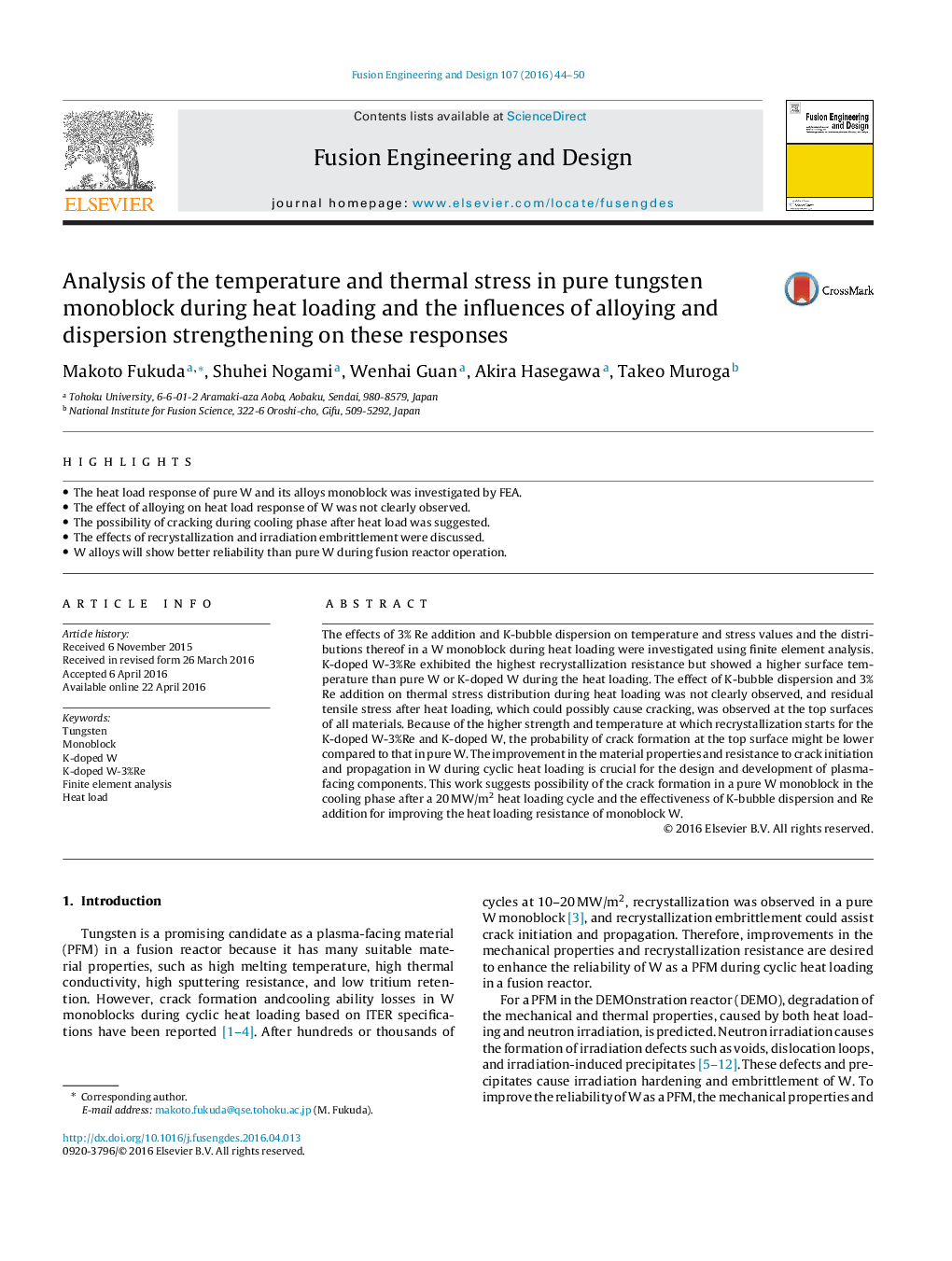| Article ID | Journal | Published Year | Pages | File Type |
|---|---|---|---|---|
| 270859 | Fusion Engineering and Design | 2016 | 7 Pages |
•The heat load response of pure W and its alloys monoblock was investigated by FEA.•The effect of alloying on heat load response of W was not clearly observed.•The possibility of cracking during cooling phase after heat load was suggested.•The effects of recrystallization and irradiation embrittlement were discussed.•W alloys will show better reliability than pure W during fusion reactor operation.
The effects of 3% Re addition and K-bubble dispersion on temperature and stress values and the distributions thereof in a W monoblock during heat loading were investigated using finite element analysis. K-doped W-3%Re exhibited the highest recrystallization resistance but showed a higher surface temperature than pure W or K-doped W during the heat loading. The effect of K-bubble dispersion and 3% Re addition on thermal stress distribution during heat loading was not clearly observed, and residual tensile stress after heat loading, which could possibly cause cracking, was observed at the top surfaces of all materials. Because of the higher strength and temperature at which recrystallization starts for the K-doped W-3%Re and K-doped W, the probability of crack formation at the top surface might be lower compared to that in pure W. The improvement in the material properties and resistance to crack initiation and propagation in W during cyclic heat loading is crucial for the design and development of plasma-facing components. This work suggests possibility of the crack formation in a pure W monoblock in the cooling phase after a 20 MW/m2 heat loading cycle and the effectiveness of K-bubble dispersion and Re addition for improving the heat loading resistance of monoblock W.
